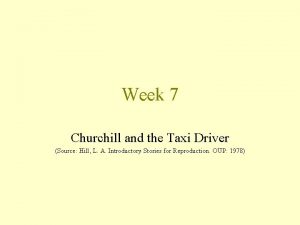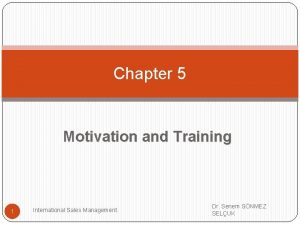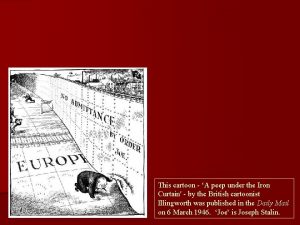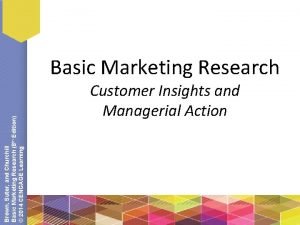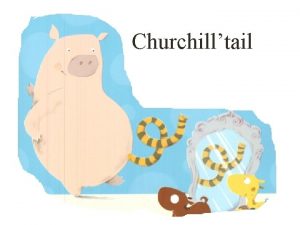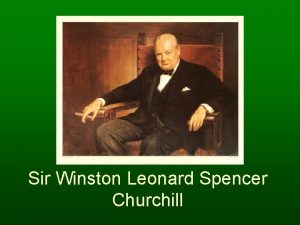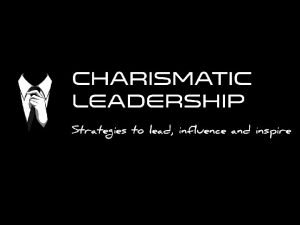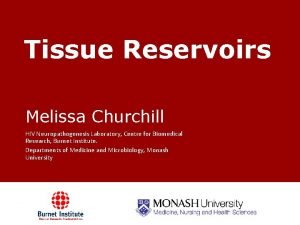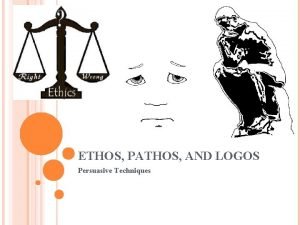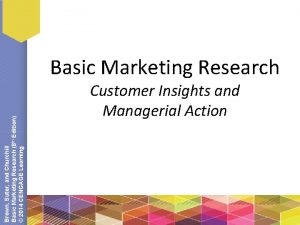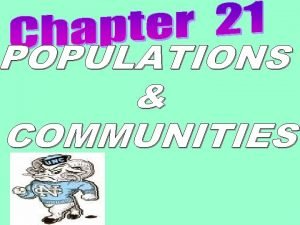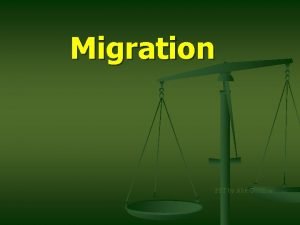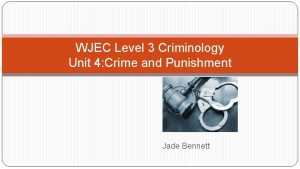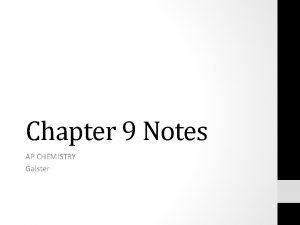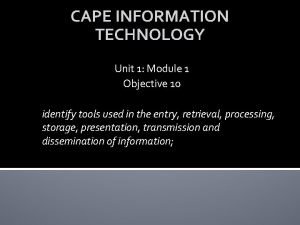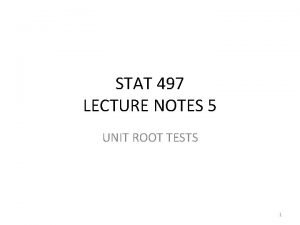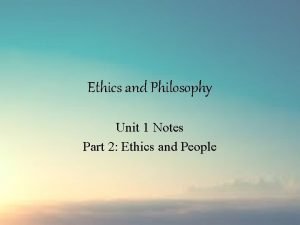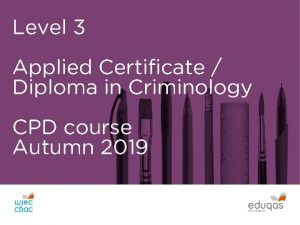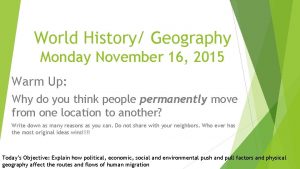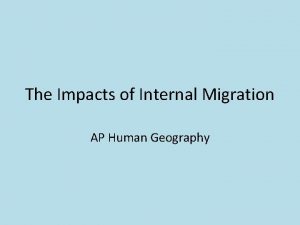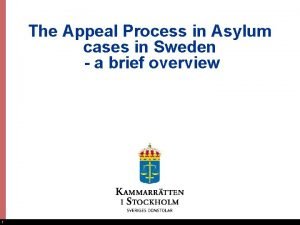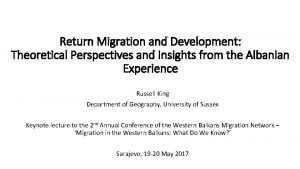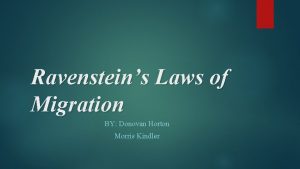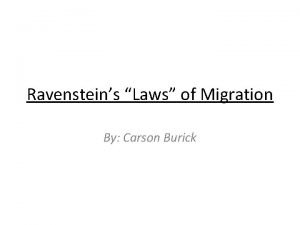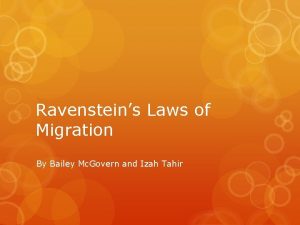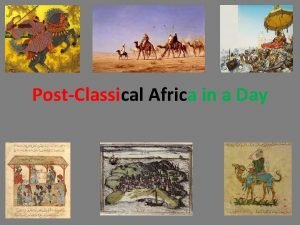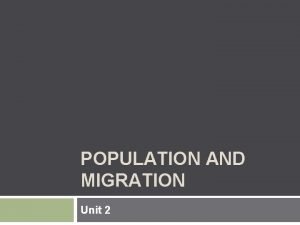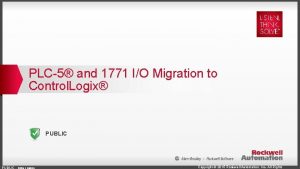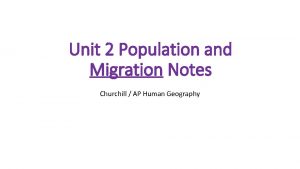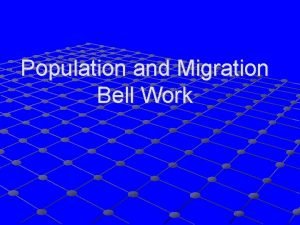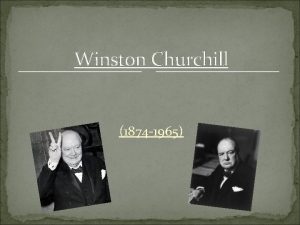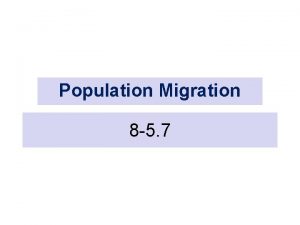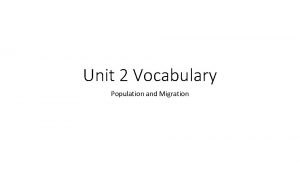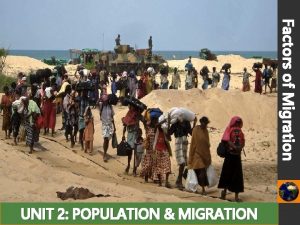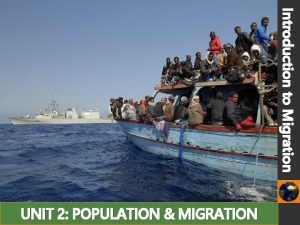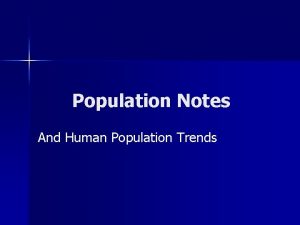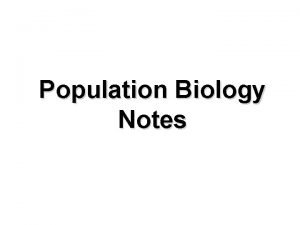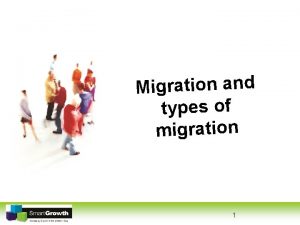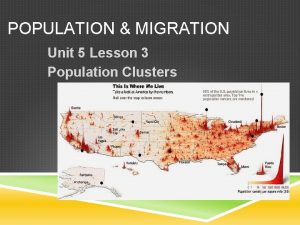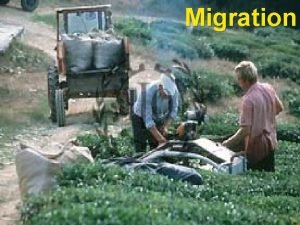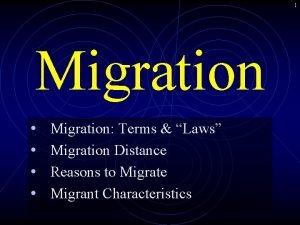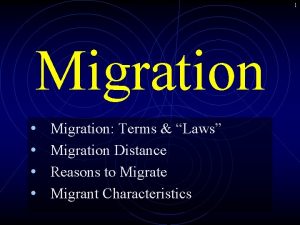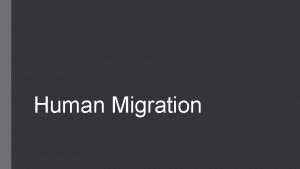Unit 2 Population and Migration Notes Churchill AP






















































- Slides: 54

Unit 2 Population and Migration Notes Churchill / AP Human Geography

Why do People Migrate? • Migration: The permanent or semipermanent relocation of people from one place to another • Geographers study from where people migrate to where they migrate and why • Migration Power Point and video: Power Point with video 15 min: http: //slideplayer. com/slide/63678 00/ • Three main motivations for Migration 1. Economic Opportunity 2. Cultural Freedom 3. Environmental Comfort

Spatial Interaction and Friction of Distance • Distance is not the barrier to communication and travel that it once was for most people. • The difficulties we have overcoming these spatial and temporal barriers are commonly referred to as the friction of distance. • The process of coming together and having more contact with each other, even though real distance remains the same, is called space-time compression. • The friction of distance is being reduced through space-time compression, and as a result, spatial interaction is increasing. • Spatial interaction is simply the interaction between two places, whether through communication, economic transaction, migration, or travel.

Circulation Migration: types of short-term, repetitive, or cyclical movements that recur on a regular basis, such as monthly or annually. • Examples: • People journeying every weekday from their homes to places of work or education and once a week to shops, places of worship to recreation areas • Circulation of individuals doesn’t involve relocation of residence and is confined to activity of space (an area in which an individual moves about as they pursue regular day to day activities. Area reachable on a typical day, Age Groups, ability to travel, opportunities to travel. • College students • Migrant workers • Seasonal labor

Migration


Push Pull Migration: People decide to migrate because of push and pull factors

Push migration: A factor that induces people to move out of their present location

Pull Migration: a factor that induces people to move to a new location

Additional Environmental Push-Pulls • Environmentally attractive places such as • Climates: moving from unpleasant regions that have extreme cold, heat or droughts regions • Attractive places such as Seacoasts, port cities, trade, retirees seeking warm beach locations, entertainment of beach locations, • Mountains, up to middle elevations for entertainment also agricultural regions • Health Reasons: those with asthma, bronchitis, tuberculosis, allergies may move to dry climates like Arizona, Malaria, sleeping sickness, animal diseases that spread to people, fleeing infected areas • Water: The need for water, droughts, decline in glacier melts, or too much water, like floods, hurricanes • Insects

Economic Push and Pull Factors

Economic Push and Pull Examples of Economic Push and Pull Factors Group and Place or Origin Push Factors Pull Factors Factory workers in the U. S. Rust Belt states, beginning in the 1970’s Farming in rural China, beginning around 1950 Unemployment rose among factory workers, particularly in traditional manufacturing states such as Michigan and Pennsylvania Many factory workers moved to southern states such as Kentucky and Tennessee, as manufacturers opened now factories there Increased use of machines and consolidation of small farms into fewer large farms reduced the number of farmers needed to raise crops Farmers moved to China’s large cities, increasing the urban population from 64 million in 1950 to 636 million by 2010

Social Push Pull Factors

Social / Cultural Push and Pull Factors Examples of Social Push and Pull Factors Group and Place or Origin Push Factors Pull Factors Mormon Migration 1945 – 1857 Anti-Mormon violence in Illinois and Missouri resulted in dozens of deaths, including that of leader Joseph Smith Approximately 70, 000 Mormons migrated to the Great Salt Lakes area , a place chosen for its isolation and agricultural opportunities Hindus and Muslims during and after the partition of India, 1947 – 1957 Violence resulted in more than 200, 00 deaths More than 14 million people migrated in hopes of finding safety in a new country

Political Causes of Migration

Political Push and Pull Factors Examples of Political Push and Pull Factors Group and Place or Origin Push Factors Pull Factors Anti-communist Cubans after Fidel Opponents of Castro were jailed or Castro’s’ communist takeover in killed if they spoke out against 1959 Castro’s government Opponents of Castro fled to the United States, where they received asylum The Dalai Lama and Tibetan government officials, after China’s takeover of Tibet in 1950 The Dalai Lama and his supporters fled Tibet in 1959 to India, which allowed them to set up a government in exile The Chinese persecuted, arrested, and killed many Tibetans who opposed the takeover

Political Push Pull factors: People who oppose the policies of a government often migrate because they fact persecution, arrest, and discrimination. Such political migrants move to countries that support their political views or will offer asylum, or protection from the danger hey faced in their home country • Syria, Civil war forces loyal to President Bashar al-Assad and those opposed to his rule battle each other - as well as ISIS • Rwanda: where members of the majority Hutu ethnic group massacred hundreds of thousands of people, mostly minority Tutsis, from April to July 1994. • Darfur from ethnic conflicts armed conflict in the Darfur region of Sudan, that began in February 2003 when the Sudan Liberation Movement (SLM) and the Justice and Equality Movement (JEM) rebel groups began fighting the government of Sudan, which they accused of oppressing Darfur's non-Arab population. • Myanmar and the refuges of Muslim Rohingya fleeing their homes in the predominantly Buddhist country. Most have crossed by land into Bangladesh, while others have taken to the sea to reach Indonesia, Malaysia, and Thailand • Balkan area as a result of fighting between ethnic groups • German persecution of Jews • Internally Displaced Persons are technically free to remain in their home country, but do not have place to stay • “Ethnic cleansing” has been defined as the attempt to get rid of (through deportation, displacement or even mass killing) members of an unwanted ethnic group in order to establish an ethnically homogenous geographic area. • Asylum: the protection from danger migrants face in their home country • Refugee: A refugee has a wellfounded fear of persecution for reasons of race, religion, nationality, political opinion or membership in a particular social group. Most likely, they cannot return home or are afraid to do so. War and ethnic, tribal and religious violence are leading causes of refugees fleeing their countries • by definition, a refugee is an asylum seeker whose case has been accepted by an asylum country

U. S. Push Pull Factors


Refugees World Wide

Sources of Refugees

Major Counties of Asylum

Why do People Migrate?


Voluntary Migration within the US

Types of Voluntary Migration – Chain Migration

Type of Voluntary Migration - Step Migration

Gravity Model of Migration – Migration Selectivity • Geographers use the gravity model to estimate spatial interaction and movement between two places. It is known as the “gravity” model because it resembles Newton’s theory of gravitational pull. • Essentially, the gravity model predicts that larger places attract more migrants than smaller places. • It also predicts that closer places attract more migrants than more distant places. • The model can be helpful for predicting migration patterns, but it has limitations. It does not factor in migration selectivity factors • The decision to migrate often fits into a predictable pattern based on age, income, and other socio-economic factors. • Migration Selectivity is the evaluation of how likely someone is to migrate based on personal, social, and economic factors. • Age is the most influential factor. Americans are most likely to move between the ages of 18 -30. • Education is also a factor. Typically the more educated people are, the more likely they are to make longdistance moves.

Intervening Obstacles Event or factor that discourages people from migrating from one place to another. and Opportunities: Factors that encourage people to migrate

Obstacles to Migration

Ravenstein’s Laws of Migration

Ravenstein’s Laws of Migration

Brain Drain












Treatment of Guest Workers in Europe • In Europe, many guest workers suffer from poor social conditions. • Both guest workers and their host countries regard the arrangement as temporary. • In reality, however, many guest workers remain indefinitely, especially if they are joined by other family members. • As a result of lower economic growth rates, Middle Eastern and Western European countries have reduced the number of guest workers in recent years. • Political parties that support restrictions on immigration have gained support in France, Germany, and other European countries, and attacks by local citizens on immigrants have increased.

Center of Population in the U. S. • The center of U. S. population has consistently moved westward, with the population migration west. It has also begun to move southward with migration to the southern sunbelt.

Zelinsky Demographic Transition

The Economy of Europe • Throughout Western Europe the regions with net immigration are also the ones with the highest per capita incomes. • Even countries that occupy relatively small land areas have important interregional migration trends. • Regional differences in economic conditions within European countries may become greater with increased integration of the continent’s economy

Migration In Russia • Soviet policy encouraged factory construction near raw materials rather than near existing population concentrations. • The collapse of the Soviet Union ended policies that encouraged interregional migration. • In the transition to a market-based economy, Russian government officials no longer dictate “optimal” locations for factories.


Population, Migration and Brazil • Most Brazilians live in a string of large cities near the Atlantic Coast. • To increase the attractiveness of the interior, the government moved its capital in 1960 from Rio to a newly built city called Brasilia.


Migration from Metropolitan to Non-Metropolitan Areas • During the late twentieth century, the more developed countries of North America and Western Europe witnessed a new trend. • More people in these regions immigrated into rural areas than emigrated out of them. • Net migration from urban to rural areas is called counter-urbanization. • Most counter-urbanization represents genuine migration from cities and suburbs to small towns and rural communities. • Like suburbanization, people move from urban to rural areas for lifestyle reasons. • Many migrants from urban to rural areas are retired people. • Counter-urbanization has stopped in the United States because of poor economic conditions in some rural areas. • Future migration trends are unpredictable in more developed countries, because future economic conditions are difficult to forecast.

Videos • Power Point with video 15 min: http: //slideplayer. com/slide/6367800/ • History of US Migration https: //www. youtube. com/watch? v=Fe 79 i 1 mu-mc • Crash Course Growth, Cities, and Immigration: Crash Course US History https: //www. youtube. com/watch? v=RRhjqqe 750 A • The Desperate Journey Of America's Mexican Immigrants 12 min: https: //www. youtube. com/watch? v=ZKOw. LSZh 1 Sw • Patterson Chapter 3 Key Issue 1 – Migration where are migrants distributed • Chapter 3 Key Issue 2 – Migration where do people migrate within a country: https: //www. youtube. com/watch? v=mr 1 eb 1_BQz 8 • Chapter 3 Key Issue 3 – Migration Why do people migrate: https: //www. youtube. com/watch? v=050 O 2 YTMc 2 o • Chapter 3 Key Issue 4 – Migration Obstacles to migration: https: //www. youtube. com/watch? v=WLYo. Vnopq. Is •
 Migration lotus notes exchange
Migration lotus notes exchange Chapter 4 section 1 population dynamics answer key
Chapter 4 section 1 population dynamics answer key Population ecology section 1 population dynamics answer key
Population ecology section 1 population dynamics answer key Population ecology section 1 population dynamics
Population ecology section 1 population dynamics Chapter 4 section 1 population dynamics answer key
Chapter 4 section 1 population dynamics answer key Churchill taxi
Churchill taxi Quotas can act as a motivator as well as demotivator
Quotas can act as a motivator as well as demotivator Peep under the iron curtain
Peep under the iron curtain Churchill dentist redditch
Churchill dentist redditch Churchill champagne citat
Churchill champagne citat Basic marketing research churchill
Basic marketing research churchill Vinegar tom analysis
Vinegar tom analysis Churchill pig
Churchill pig First we shape our buildings churchill
First we shape our buildings churchill Churchill chancellor of the exchequer
Churchill chancellor of the exchequer Churchill zürichi beszéde
Churchill zürichi beszéde Charm vs charisma
Charm vs charisma Melissa churchill
Melissa churchill Logos examples in speeches
Logos examples in speeches Basic marketing research churchill
Basic marketing research churchill Vce hhd study design
Vce hhd study design Unit 10, unit 10 review tests, unit 10 general test
Unit 10, unit 10 review tests, unit 10 general test Conversion notes brutes en notes standard wisc 5
Conversion notes brutes en notes standard wisc 5 Equivalent ratios
Equivalent ratios Human impact on oceans
Human impact on oceans Push and pull factors of migration ppt
Push and pull factors of migration ppt Radial and tangential migration
Radial and tangential migration Unit 4 crime and punishment
Unit 4 crime and punishment Ball chart in spm
Ball chart in spm Ap chemistry molecular geometry
Ap chemistry molecular geometry Cfe higher chemistry
Cfe higher chemistry Cape information technology unit 1 notes
Cape information technology unit 1 notes Unit root time series
Unit root time series Professional ethics unit 1 notes
Professional ethics unit 1 notes Unit 1 biology notes
Unit 1 biology notes Wjec criminology grade descriptors
Wjec criminology grade descriptors Computer graphics unit 2 notes
Computer graphics unit 2 notes Unit 4 lesson 7 right triangles and trigonometry unit test
Unit 4 lesson 7 right triangles and trigonometry unit test Unit process and unit operation
Unit process and unit operation What is unit operation and unit process
What is unit operation and unit process Factors of migration
Factors of migration Thomas malthus concluded that
Thomas malthus concluded that Remittances ap human geography
Remittances ap human geography Migration court of appeal stockholm
Migration court of appeal stockholm Windows server migration tools
Windows server migration tools Striped bass migration map
Striped bass migration map Migration hump
Migration hump Ravensteins laws
Ravensteins laws Ravensteins laws of migration
Ravensteins laws of migration Ravensteins laws of migration
Ravensteins laws of migration Bantu migration
Bantu migration Zelinsky model of migration transition
Zelinsky model of migration transition Zelinsky's model of migration
Zelinsky's model of migration Fantasy by gwendolyn bennett analysis
Fantasy by gwendolyn bennett analysis Plc 5 to controllogix conversion kit
Plc 5 to controllogix conversion kit





